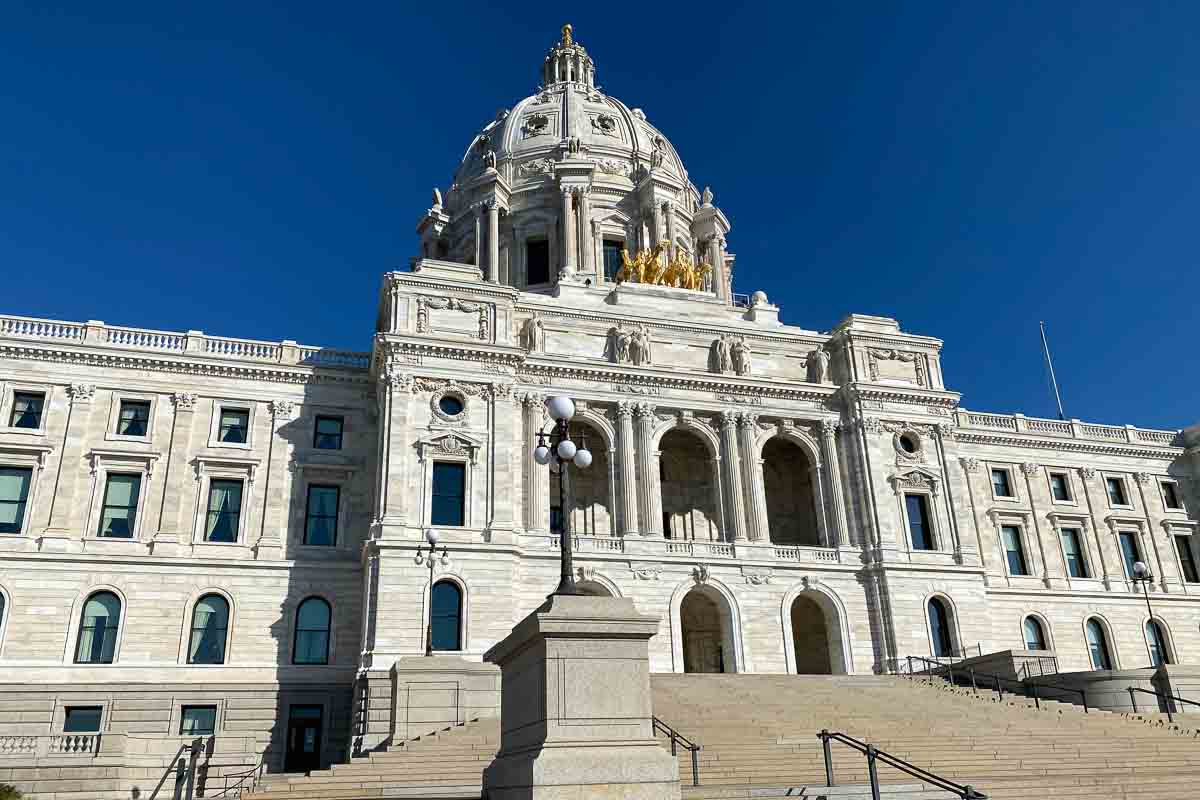
The Minnesota State Capitol in Saint Paul, is, obviously, the seat of Minnesota state government. It houses the Minnesota Senate, Minnesota House of Representatives, the office of the Attorney General and the office of the Governor. The building also includes the chamber of the Minnesota Supreme Court, although actual court activities usually take place in the neighboring Minnesota Judicial Center.
The current Minnesota State Capitol building is actually the third state capitol, built after the first burned in 1881, and the second replacement capitol was deemed too small and poorly ventilated. The current capitol building was designed by renowned architect Cass Gilbert. Work began on the capitol in 1896, its corner-stone laid July 27, 1898. Construction was completed in 1905. The capitol cost $4.5 million to build.
Some posts on MN Trips may contain affiliate links. If you buy something through one of those links, we may earn a small commission. As an Amazon associate, we earn from qualifying purchases.
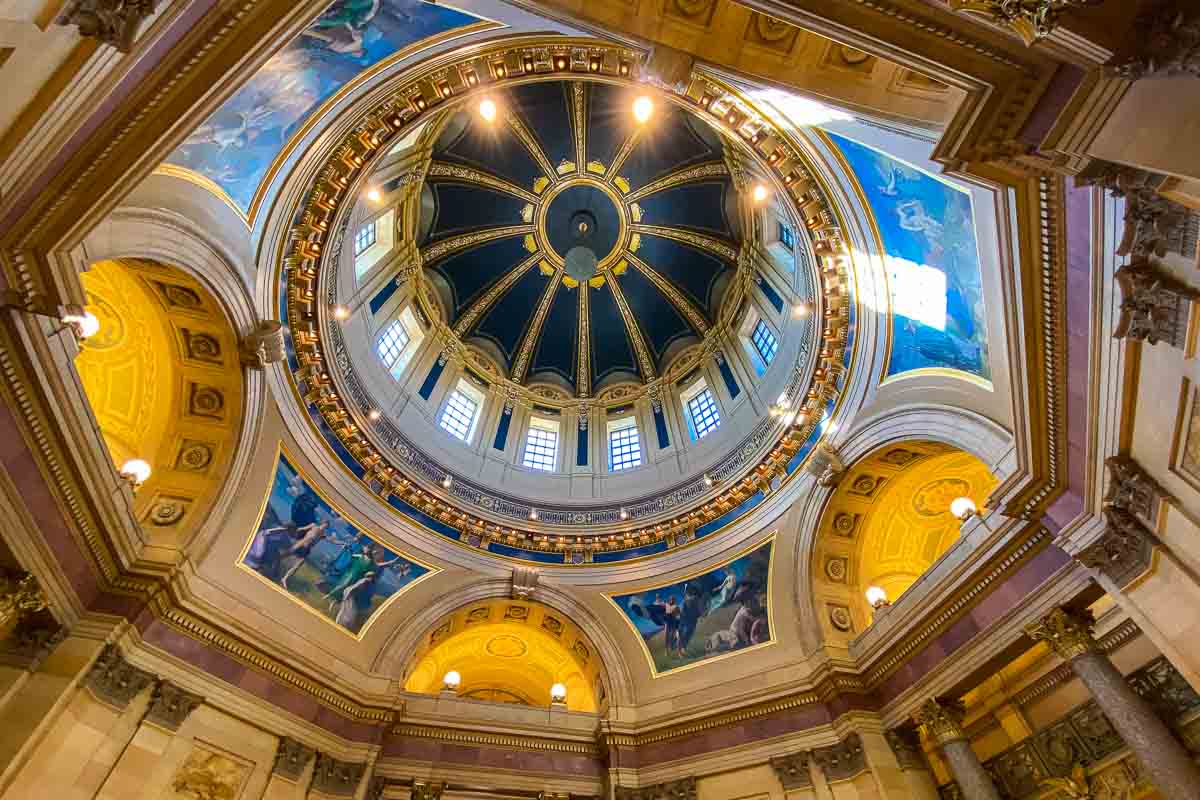
Today, after an extensive renovation that took several years, the State Capitol makes for a lovely tour, and a history and art lesson for both young and old. Perhaps the impression the Capitol makes is best summed up by the exclamation of my five-year-old grandson, who first said, simply, “Wow,” upon his first view of the façade, and then amplified this to, “This is awesome,” when he got inside.

The various views of the Capitol, especially from the inside, benefit not only from Gilbert’s original vision, but from an extensive four-year restoration of the Capitol between 2013-2017. As the Minnesota State Historical Society guide described the process, it primarily involved scraping layers of soot off every surface that had accumulated over years of heating the building with fireplaces…and allowing tobacco smoking in the building.
The 20 varieties of stone that went into the construction of the walls and columns are luminescent in the sunlight that pours in through the windows in the dome. But the real beneficiaries of the restoration were the cleaned and repainted murals that highlight the walls of the rotunda and the various chambers. The restoration cost over $300 million.
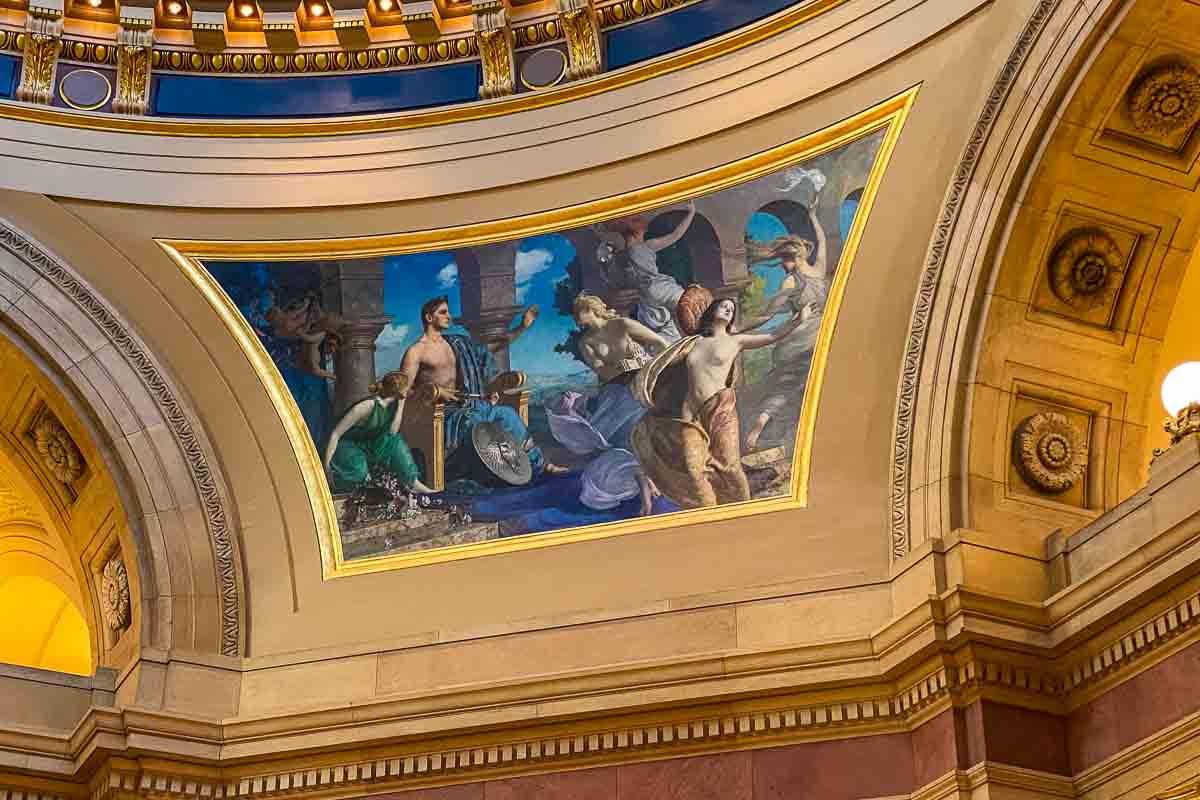
The upper reaches of the rotunda are lined with four allegorical paintings by the artist Edward Simmons representing “The Civilization of the Northwest.” The Senate and House Chambers also feature allegorical murals.
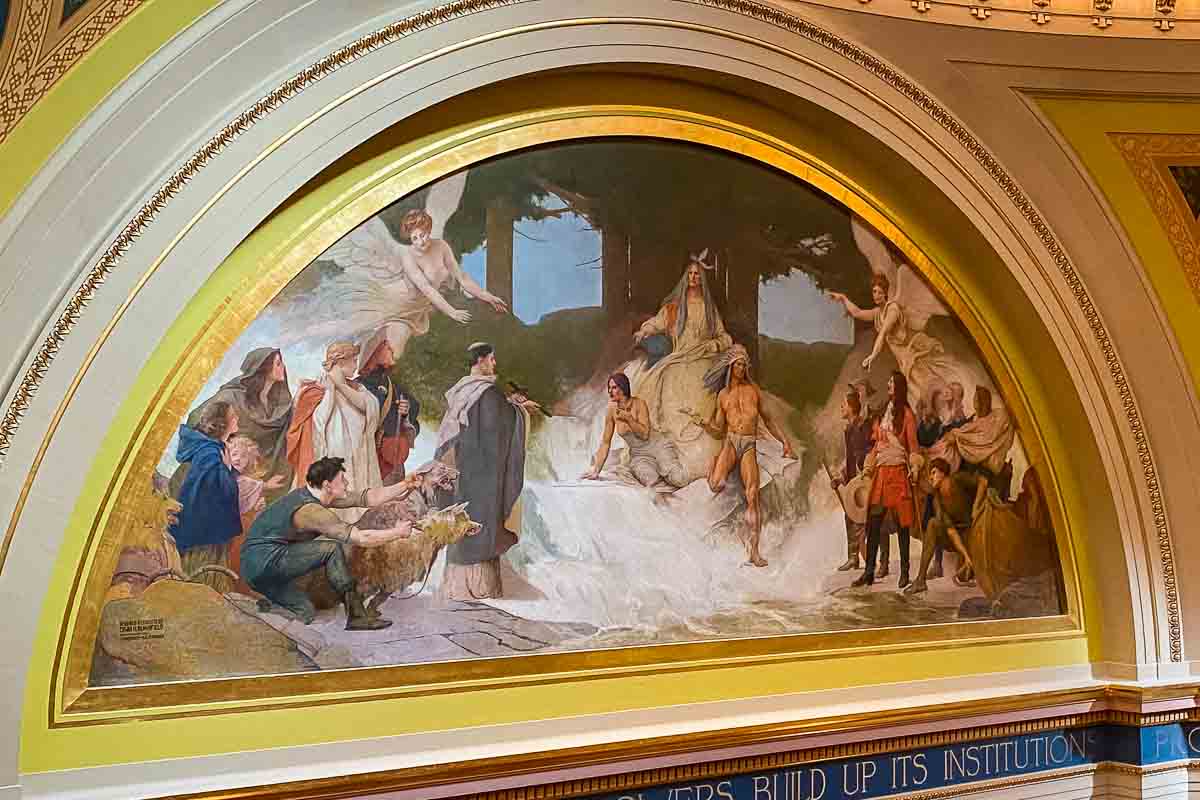
A guided tour, whether conducted by the Historical Society, or on your own with a brochure and map provided by the Historical Society is worth your time, and will take you to the House and Senate chambers and the Supreme Court. On nice days, you’ll also get to go on the roof to see the chariot and four golden horses, called the Quadriga. Usually the tour will also include the Governor’s Reception Room, when it’s not in use. Unfortunately, we didn’t get to see it on our tour.
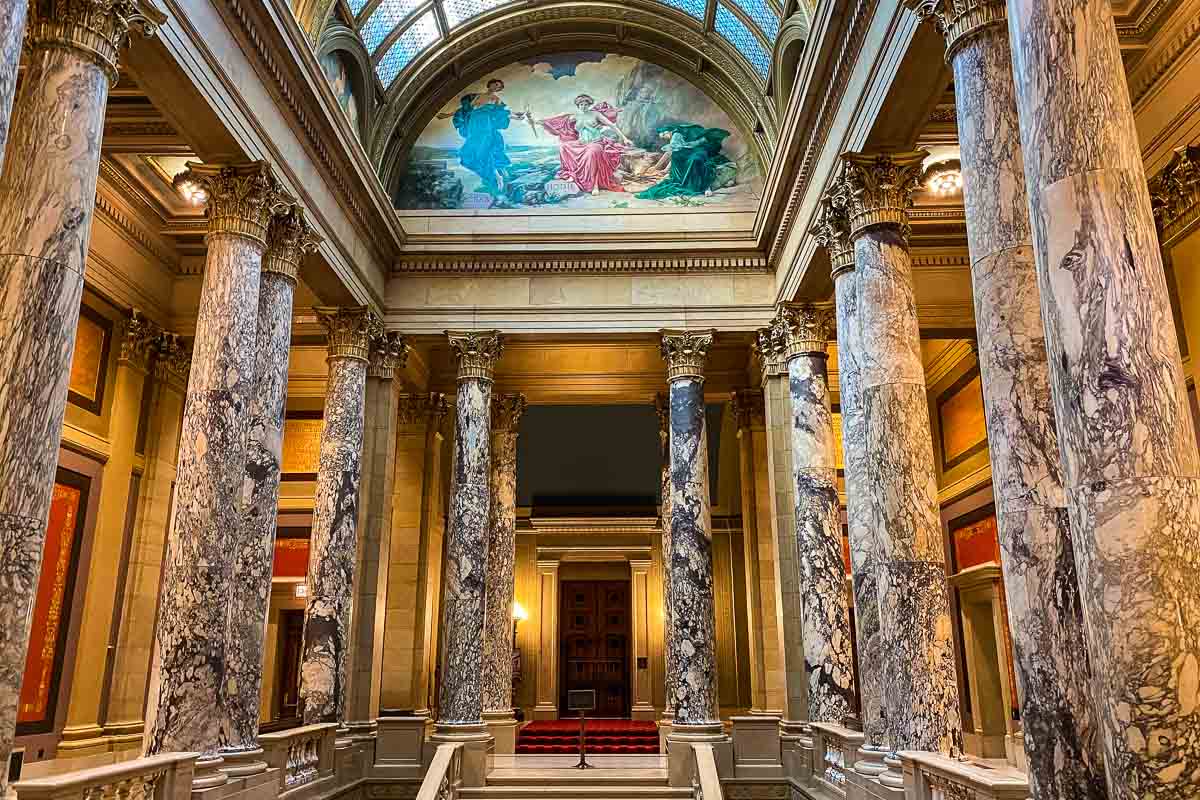
Finally, be sure to check out the flag displays on the first floor. On a rotating basis, the Capitol displays many historical flags used by Minnesota troops dating all the way back to the Civil War, including flags carried at the battles of Bull Run and Gettysburg.
The Capitol is open Monday through Friday from 8 a.m. to 5 p.m. Admission is free. Tours are given by the Minnesota State Historical Society on the hour during those times and are also free, although a $5 donation per person is customary.
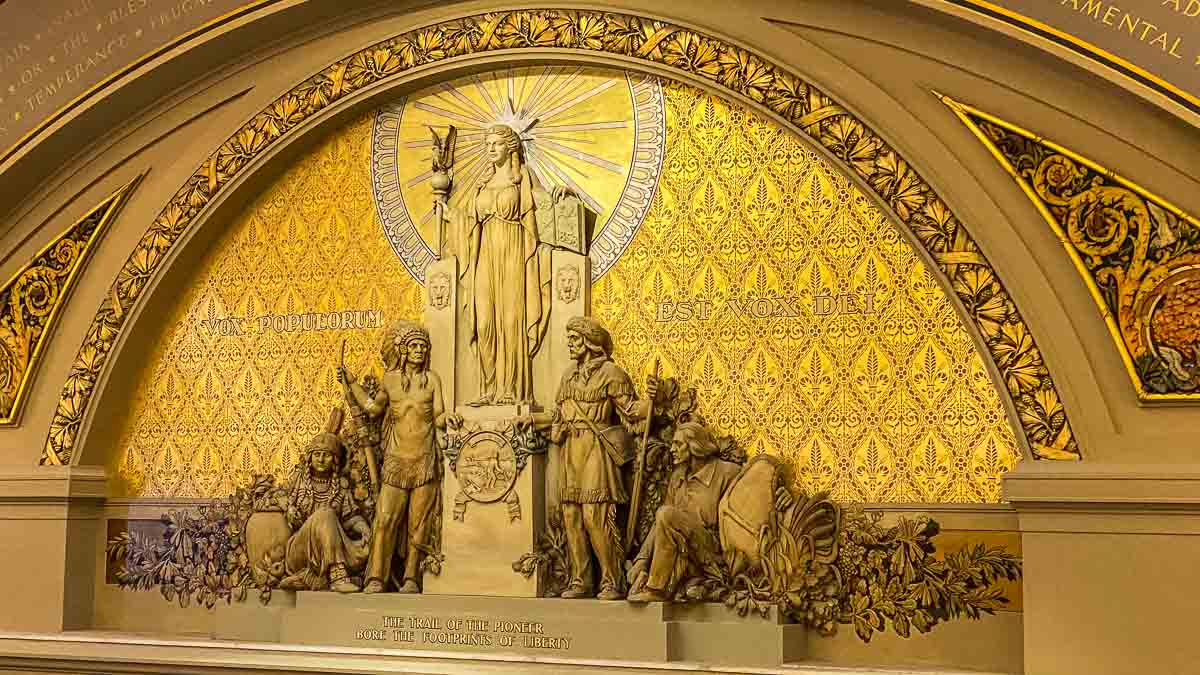
More info from MNTrips
See the list of all Minnesota State Parks, including basic permit information. We also have a list of all Minnesota Historical Society sites. We’re adding our commentary for the park and historical sites as we visit them.
When you plan on hiking or biking the Minnesota State Parks, be sure to download the Avenza Maps app to your phone. The app allows you to download the trail maps for almost every state park, and they are invaluable for navigation, especially because many of the parks don’t have as many directional signs as they should.
Also, if you’re planning on camping at Minnesota State Parks, you’ll need a reservation. Here’s the online reservation form.
Check out our recommendations for what to carry in your hiking day pack when you check out the extensive Minnesota State Park and National Park system.
Some of the links on this page may be affiliate links, which means we may receive a small commission if purchases are made through those links. This adds no cost to our readers and helps us keep our site up and running. Our reputation is our most important asset, which is why we only provide completely honest and unbiased recommendations.
- Birding in Winnipeg - June 24, 2023
- 12 Museums to Visit in the Twin Cities - March 21, 2023
- Crosby Manitou State Park: A Tough Hike - July 27, 2022

